For many decades, the surgical treatment of varicose veins of the legs remains the only radical method to eliminate this disease and its complications.Thanks to modern technologies and the improvement of the operating techniques, it is very effective in both therapeutic and cosmetic terms, it is carried out as simple and painless as possible, well tolerated by patients and does not cause longer disability.
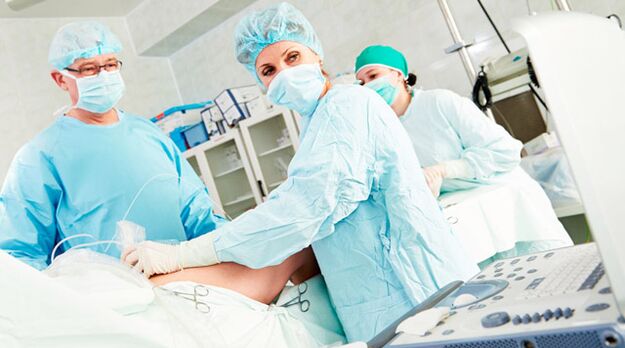
Usually, about 30% of the blood flow from the lower extremities through small subcutaneous venous tributaries that merge in two central venous tribes - a large and small subcutaneous vein.These vessels are directly connected to deep veins, through which 70% of the blood flows flow.In the places of such connections there are flaps that only fit blood from surface veins into deep veins.There are also dozens of small veins that also connect the superficial venous network to Deep.They also have valves that only pass in one direction.The main cause of varicose veins is the failure of the venous valves, which leads to improper blood discharge: from deep veins to surface, which increases the pressure in them and leads to the expansion of small vessels and central vein tribes.The main goals for which surgical treatment aims at varicose veins of the lower extremities:
- The elimination of blood tag nation of blood in changed surface veins of the legs, which prevents the progress of chronic venous insufficiency and trophic disorders on the skin.
- Remove deformed vessels and varieties that represent a cosmetic defect.
- The elimination of the blood discharge from deep veins in superficial - the league and the intersection of the perforants (clans) veins as well as a large and small subcutaneous vein in the places of their connection with depths.
- Prevention of a repeated occurrence of varicose veins.
A separate place in the surgical treatment of female varicose veins of the lower extremities is part of cosmetic surgery.After such interventions, not only changed veins changed pathologically, but also postoperative scars on the skin of the legs or they are inconspicuous.In order to achieve the maximum cosmetic effect, the surgical operations for varicose veins are carried out in accordance with the following methods:

- Laser or radio frequency dilation of the vein combustion of the central tribes of a large and small subcutaneous vein under the ultrasound control by puncturing the skin on the thigh or on the foot.
- Stammliteration and sclerotherapy - fill in large and small subcutaneous veins as well as all of their tributaries, even the smallest, with a special medication.
In one of the treatment methods described, varicose veins are not removed, but are transformed into a soft zikatricial fabric by blood vessels.Both physical influences (laser rays, radio frequency waves) and chemical compounds (sclerosant) destroy the inner layer of the vein.Thanks to this, it loses the lumen, the adhesives and fully stolks out of the blood and turns into an ordinary bandage -(-cicatricial) tissue.Therefore, all goals that are assigned to the fast treatment of varicose veins of the lower extremities are assigned without direct veins of the lower extremities - changed vessels are eliminated, and the dangerous consequences of venous insufficiency are eliminated in them.The only restriction of cosmetic operations in the treatment of varicose veins in women is only slightly or intensively expanded to 1-2 degrees.During pregnancy and in the early postpartum time, surgical treatment with the exception of acute situations is contraindicated, such as emergency interventions, for example with rising thromblophbititis.The operation is limited to the dressing of a large subcutaneous vein at the point of its connection to femur (crossectomy).Consider the most common surgical interventions in the treatment of varicose veins of the lower extremities: laser ablation, endoscopic dissection of veins and phlebectomy.The latter is divided into the following types:
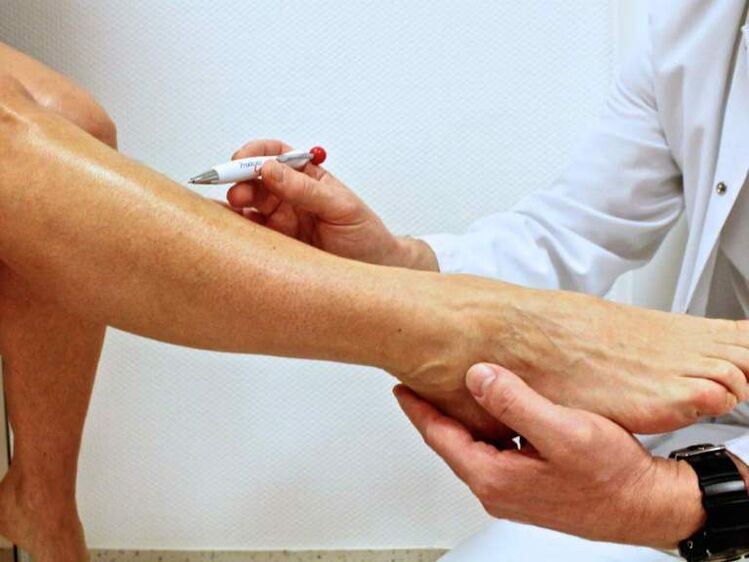
- Classic operation or complete stripping or operation of Trojanov trendelenburg-Bubko-Narata;
- short stripping;
- Flebectomy.
Fleet
The distance, extraction of veins under the skin is referred to as phlebectomy.This is one of the first methods for the surgical treatment of varicose veins of the lower extremities.To date, however, phlebectomy is most often carried out by phlebology and vascular surgeons.There are three modifications and operating methods: full, short string, mini -fleeing.Domestic surgeons call the classic phlebectomy the Operation Trojanov-Trendelenburg-Bubko-Narat and foreign authors with complete stripping.The intervention volume is presented:
- As the bandage of the tribe of a large subcutaneous vein at the scene of his confluence, 2-3 cm on the thigh under the groin fold in the thigh through a cut.
- The distance through the groin area to the foot using a special probe by two skin slices 1-2 cm along the inner surface near the knee and ankle.
- The removal of all varicose veins and small veins by separate small cuts is about 1-2 cm (you can be between 5 and 6 to 10 to 20) with the dressing of insolvent perforant vessels.
- Sew all wounds with cosmetic seams.
With the classic phlebectomy you will remove the most radical varicose veins, but the most traumatic under all existing techniques.
Short strip
With a short stripping, the entire large subcutaneous vein is not removed, but only its fragments that are influenced by varicose veins, for example only on the thigh or on the lower leg.Healthy segments are not removed.This reduces intervention trauma, but the risk of relapse in the disease remains.Otherwise, the operating operations of the operation of the classic phlebectomy are similar.
Fleet
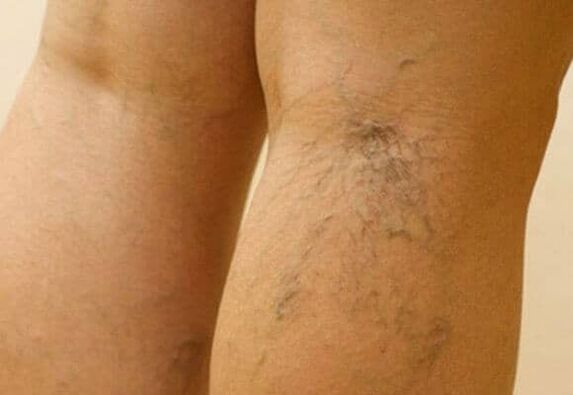
The innovativeMethodology to remove small varicose veins of a large subcutaneous vein is referred to as phlebectomy.For its implementation, special tools (pointed scalpel, hook, clamps, clamps, spatula) are required, with which veins are extracted several millimeters through the skin of the skin.It is not necessary to sew such skin defects, scars are invisible.Most of the time, surgeons combine a short or complete strip of a large subcutaneous vein with phleectomy.Such a combined operation combines radicalism and adhesive trauma with a good cosmetic effect.The laser ablation for varicose veins comprises burning with a laser beam of a large subcutaneous vein from the side of its approval.For this purpose, the puncture of the skin on the thigh or in the ankle area is inserted into the lumen of the veins in its entire length.Under the control of the ultrasound, the Svetovod is slowly extracted.The laser beam that acts on the venous wall destroys the inner layer.As a result, Vienna falls and stops working, which is clearly visible on the ultrasound monitor.If not only the most important venous suitcase of varicose veins, but also by the tributaries, they are removed using the phlebectomy method.
A disease such as varicose veins is a disease that is characterized by a functional disorder of the vascular walls and the weakness of the valves in the veins, which leads to stagnation in the blood vessels of the lower extremities and the occurrence of venous nodes.Such a pathology is quite dangerous and not only with trophic disorders and the presence of an inflammatory process, but also with the lack of tissue nutrition.As a rule, this contributes to the formation of blood clots, which can spread difficult to live trophic ulcers due to the blood flow through the entire body and the appearance.In addition, the formation of thrombotic formations within the vessels threatens the development of a disease such as thrombophlebitis.If the patient has the lower extremities on varicose veins, surgical treatment is mandatory, especially if the disease is brought onto the market.I would like to attract the attention of the readers of our site that an operation via varicose veins of the lower extremities is a radical measure and is usually prescribed if it cannot do without them.Disease disease of the lower extremities, surgical treatment includes several that are most used for surgical treatment in surgical practical options.These options are directly at the approach of removing the vessels and veins of the lower extremities.
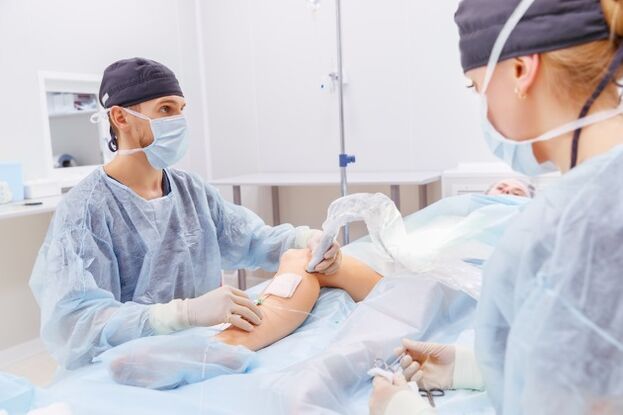
- The use of a traditional phlebectomy in surgical practice for the radical treatment of varicose veins.This option is carried out according to the BEBBOK methodology.This implies the introduction of a probe that is specially designed for such a procedure in the lumen of the ship and the subsequent extract of the vein by a prefabricated incision on the skin.After the operation, the cable is carried out with a cosmetic seam, which means that it is almost invisible afterwards.
- Flebectomy - Such an operation is required to remove small sections of blood vessels and veins affected by varicose veins.Note that this process does not provide for any cuts on the skin, since part of the affected vessel or the affected vein is removed on the skin by puncturing, which does not have to impose seams.
Note that surgical intervention in the treatment of certain diseases is shown far.Nevertheless, the varicose veins of the lower extremities, surgical treatment, is extremely necessary if the removal of blood clots and possibly dangerous sources of the inflammatory process is required.This approach improves the patient's condition and helps to avoid severe and uncertain health and life of the patient's complications.The conditions that require an urgent surgery for varicose veins include:
- the presence of thrombophlebitis or the risks that cause its appearance;
- Acute thrombophlebitis or frequent exacerbations of the disease;
- extensive defeat of blood vessels and veins;
- The constantly disturbing feeling of fatigue and severity in the legs, unpleasant pain, which indicates a clearly expressed varicose vein;
- The appearance of trophic ulcers.
There are also certain contraindications for operation for varicose veins:
- Second and third pregnancy trimesters;
- the presence of infectious symptoms in acute form;
- Detachment of the pathologies (diabetes, asthma, peptics and others) that exist in a patient);
- Myocardial infarction, stroke;
- Dermatological problems.

Stripping - As a rule, this method is used in the presence of a small section of the lesion.This is a technique that, in contrast to conventional phlebectomy, is more economical.The method consists of stretching through a special hook, the venous knot.There is also a subspecies of this technique - drops of crysta, which implies the fall of the damaged ship on the Kryosonda and its subsequent distance.
Sclerosis - Technology ensures the introduction of a damaged sclerosant, a special substance for the “gluing” of the walls of the vessel.Nevertheless, the vein does not extend after the procedure, but does not remain on the spot without fulfilling its purpose, although the blood flow through Vienna and Stops, but this function is carried out by collateral vessels that do not violate the drainage of venous blood.The operation is carried out under mandatory control of a specialist with ultrasonic equipment.
Laskoagulation - This method is the most innovative in the treatment of varicose veins and is the introduction of special devices with laser radiation (thin probe) into the lumen of the vein.The device has a chewing effect on the walls of the blood vessel.
Consequences after the operation to remove varicose veins:
- The appearance of characteristic postoperative hematomas on the surface of the body, which are usually dissolved for several months;
- After a few months they also disappear under the skin along the bed of the remote ship.
- Violations of the integrity of the lymphatic system (blood vessels) of blood vessels, which can lead to stagnating processes.Such postoperative consequences are treated conservatively, but the circulation of lymph is often restored after a few months.
- Possible damage to the subcutaneous nervous ends, which are manifested by impaired sensitivity of the epidermis manifested diesian postoperative symptoms after 5-6 weeks.
Summarize
Disease disease operation
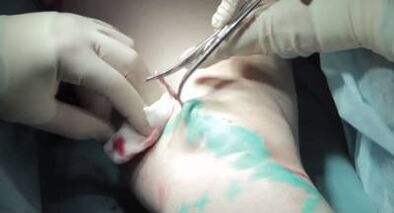
Traditionally, the phlebectomy (crossectomy) is carried out according to the bebcock method and consists in completely inserting the probe into the lumen of the veins with the subsequent vein section over the length through the cut on the skin outside over the length.The cut is sewn with a cosmetic seam at the end of the operation.The fleet is used to remove very short vein areas.No veins are used during operation.No cuts are carried out on the skin, and a piece of veins is removed by a thin puncture on the skin, which does not require seams imposing.With a small area of damage to varicose veins, it is possible to carry out a gentler technique - stripping.This extends with a thin hook of only one fragrance node.Experience is carried out with two cuts on the skin with your subsequent sewing.A variety of this technique is cryostropping - "sink" of the veins into the Kryosonda at low temperatures and is also stretched out of the destructive knot.
Viennese sclerosion is the introduction of a sclerosant into its lumen - a substance that "sticks" the walls of the vein together, but the vein remains deep under the skin and does not fulfill its functions.The blood flow through the veins stops and goes through collateral vessels without violating the drain of venous blood from the lower extremity.Viennese sclerosis is carried out under the control of ultrasound.Laser coagulation of varicose veins is the latest method in phlebology and is to insert a thin probe into the lumen of the veins with laser radiation, which exerts a chewing effect on the walls of the vein.The method of radio frequency procurement of the veins also refers to a more modern treatment of varicose veins, but not all medical facilities are equipped with suitable devices.The technology consists of the "chewing" effect on the vascular wall of the radio waves with high frequency.




















